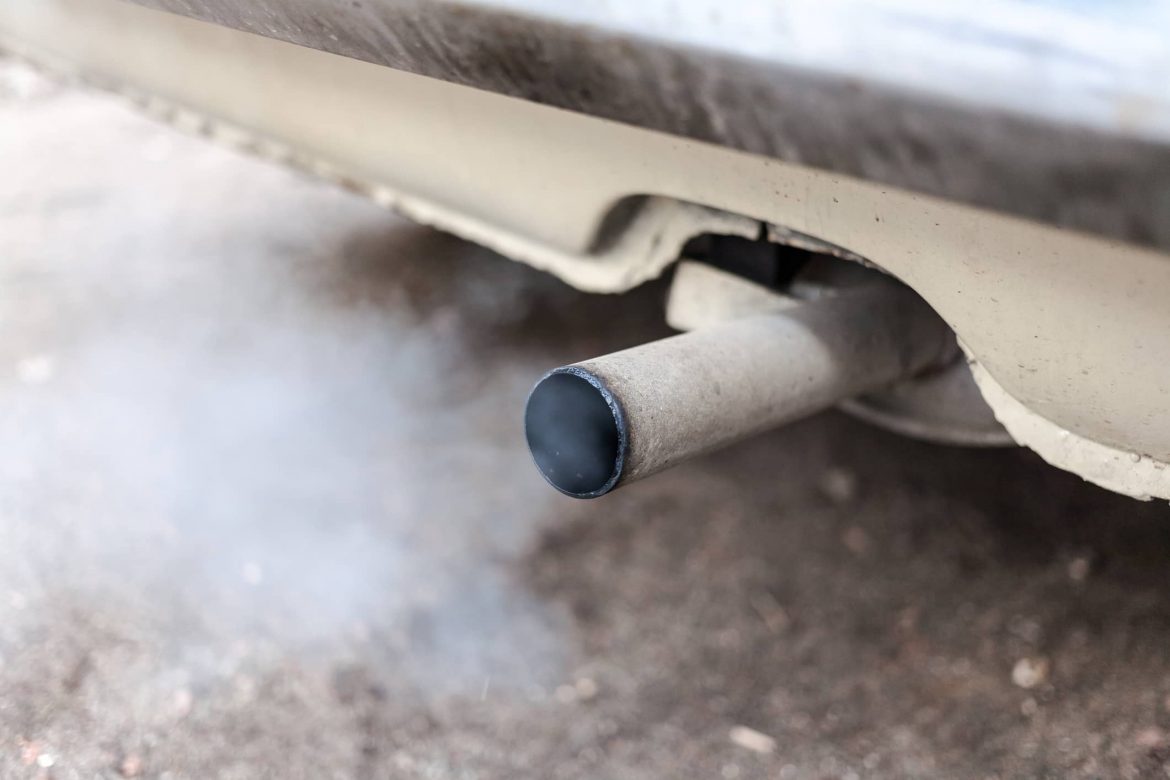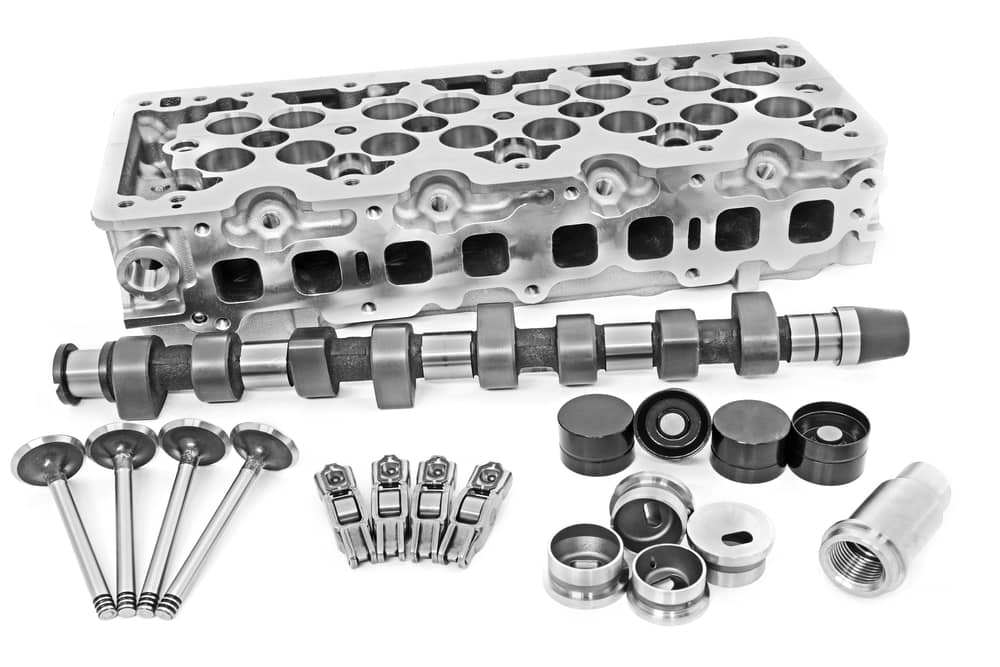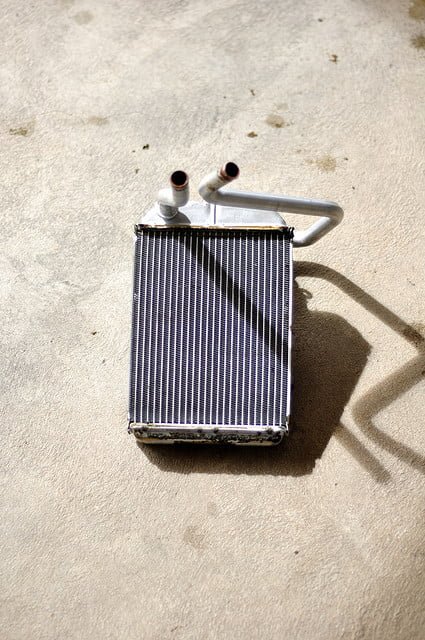“Your timing chain broke.” “You need a complete engine overhaul.” “You blew your rear main seal.” “Your mother-in-law is coming to stay for a few months.” These are among the scariest phrases for any vehicle owner. Add one more to that list: “You’ve blown your head gasket.”
When it comes to an automobile, a blown head gasket is on the Mount Rushmore of problems you don’t want to have. The reason is this: Head gasket repair is a very expensive proposition. It can easily cost $1,200. Even for an experienced DIYer, it is a big pain in the neck. Repairing a blown head gasket yourself can save most of that $1,200, but just be aware that it will require setting aside a whole day.
The Life of a Head Gasket
The head gasket’s job is to do nothing. Just stand there. But where it stands is an important place, and just standing there is a tough job.
The head gasket’s place is at the interface between the engine block and the cylinder head. In the cylinder sits the piston, pumping up and down hundreds of times every minute with the help of lubricating oil. The engine is home to the internal combustion system in which sparks ignite fuel and air for explosions that move the pistons.
Complicating matters is this: Explosions don’t occur, at least not efficiently, if motor oil gets into the ignition space. And pistons don’t move inside cylinders if the oil is leaking out.
So on one side of the head gasket is fire and immense air pressure. On the other side is endless vibrations and heat. Standing there is tough work. The head gasket must be able to withstand heat, pressure, chemical attack and the pounding effect of all that goes on around it. It must never crack, corrode, shrink, slip or take a vacation day.
Head gaskets are designed to last the life of the vehicle. But sometimes they don’t. Then, they must be taken care of immediately.
Replacing a head gasket is incredibly easy. Remove the old head gasket and insert the new one. The problem is getting to the head gasket. It’s like the honey you stuffed in the back of the pantry somewhere that you haven’t opened in two years. Using it is easy, but first, you have to remove everything else from the pantry to get to it.
It’s the same with the head gasket. So let’s get started.
How to Fix a Blown Head Gasket
Start by putting the vehicle on a lift or by engaging the emergency brake so the vehicle doesn’t move. For added safety, don gloves to protect your hands and goggles for your eyes. It is a good idea to have the vehicle’s repair manual on hand before starting. If you don’t have one, manuals for most common vehicles can be downloaded from the Internet.
Drain the engine oil and coolant, disconnect the battery and remove the fan shroud at the front of the engine. The radiator can be removed fairly easily, but it doesn’t have to be. Everything that is removed comes with screws, nuts and bolts that must be accounted for. One trick is to employ little baggies for each set of screws. Label each so it is clear which items belong together.
Remove the plenum chamber that is attached to the throttle body. The fan must then be removed, which sometimes requires a special, large wrench.
That exposes the serpentine belt, which routes around a series of pulleys. Take a photo of the pulleys and the routing pattern to expedite reattachment of the belt later. Remove the belt, the pulleys and the water pump. Unscrew the air conditioning compressor and move it out of the way. It is unnecessary to remove it entirely.
Unhook the spark plug wires and drag them out of the way. The same for all the hoses and wires. The throttle body may also have to be removed. If anything is oil-covered or otherwise dirty, clean it up with a rag.
It may be necessary to remove the fuel line. This can be done by holding the line and pulling the connector forward to release the other end of the line, or by using a special tool.
The intake manifold and cylinder head must also be removed. They are heavy, so be careful with them.
Next remove all the bolts holding the valve cover and remove it. The valves are now exposed, so be careful about keeping debris from getting into the unit.
The spark plugs must be removed next. Use a spark plug wrench for that. Then, unscrew all the bolts holding down the cylinder head and keep track of their order. They are going to have to be re-installed in the same places they came out of. After ensuring there are no further wires or hoses connected to the cylinder head, lift it out. It is heavy and there isn’t much room to maneuver, so a second set of hands can be helpful.
That little slice of metal sitting atop the cylinders is the head gasket. Pull it off and inspect everything around the cylinder block. If anything is cracked or corroded, there may be another issue. Clean the top of the cylinder head and make sure no warping has occurred. Consult the repair manual for warping tolerance.
If everything passes muster, clean up the cylinder heads with a toothbrush and the cylinder walls with an oil-soaked rag. Then install the new head gasket with the correct side facing up.
Next it is just a matter of replacing everything that has been removed. Making sure everything is clean, attach everything in reverse order. In the cylinder head, it is necessary to follow the repair manual for the sequence of bolt installation and the amount of torque to apply. Over-torquing the bolts will cause cracking and under-torquing will not secure the cover.
Once everything is re-installed, new oil and coolant must be added. It is often a good idea to flush both the oil and the coolant before adding new, because oil and coolant leaks were likely the tipoff that the head gasket had blown.
When Replacement Isn’t an Option
For around $60, many head gasket issues can be rectified. If replacing the head gasket isn’t an option, try a bottle of BlueDevil Pour-N-Go Head Gasket Sealer. It is formulated for easy use and a single 16-ounce bottle is sufficient for a 4-cylinder or 6-cylinder engine.
BlueDevil Pour-N-Go Head Gasket Sealer offers permanent leak repair and sealant for head gaskets and other parts like cooling system leaks, heater cores and freeze plugs.
How to Use BlueDevil Pour-N-Go Head Gasket Sealer
With the engine cold, drain 16 ounces from the radiator. Start the engine and turn the heater on max. With the transmission in neutral or park, slowly pour the sealant into the radiator over the course of a minute. Replace the radiator cap and allow the vehicle to idle for 50 minutes so the sealant can circulate.
That’s it! One hour and $60 often solves the problem immediately and permanently. If the problems that led to the diagnosis persist, fix the blown head gasket or bring the vehicle to a professional mechanic. When sealant does not work, that is an indication that the problem runs deeper than a simple issue with the head gasket.
BlueDevil Products can be found at AutoZone, Advance Auto Parts, O’Reilly Auto Parts, NAPA, Parts Authority, and other major auto parts retailers.
BlueDevil Products can be found on Amazon.com or at AutoZone, Advance Auto Parts, O’Reilly Auto Parts, NAPA, and other major auto parts retailers.
10 responses to "How Do I Fix a Blown Head Gasket?"
10 Comments
Leave a Reply
Related Articles




Everything I needed to know. Thank you
To use the blue devil headgasket sealer do you have to take the thermostat out. But what if your thermostat is built into the housing like it is on my 05 gmc envoy and the thermostat CAN NOT be taken out.
Justin-
The best way to get around the thermostat housing is by taking the thermostat and modifying it so that the middle piece does not close; you may remove this piece or gut the middle of the thermostat. By doing so you will create a free flow and still be able to have the full housing installed. The thermostat should remain “open” while BlueDevil circulates through the system. Once the BlueDevil procedure is complete you will need to replace the thermostat.
Thank you!
-BDP
Ok I have a 12 Altima s 2.5 radiator leaks like a sub pulled it out holds water out of car not in. I can’t start my car bc there’s water in my cylinders. Don’t think there’s water in my oil but it won’t drive to show my if I have milky oil or not no white smoke from tail pipe water shoots out my radiator cap when I try to start it. I just need to know if I can use the blue devil head gasket sealer before I use it I have the 90$ bottle
Crystal-
Thank you for asking about your Nissan Altima. In order to get the benefit of using the BlueDevil Head Gasket Sealer, the vehicle would need to be able to start and idle for a full 50 minutes. If you are unable to get the vehicle started, unfortunately, the leak may be a little more extreme than what the product would be able to seal. A hard part repair may be your best option.
Thank you!
-BDP
Ok I’ve been looking up parts bc what I forgot to mention while I was trying to remember everything is someone poured water into my extremely hot engine! I don’t understand how all males don’t know that you CANNOT do that without RUINING a bunch of stuff bc I’m a female and I knew that damn everybody knows that!
Aloha. I had either a blown head gasket, or a leaking intake manifold gasket on My 1999 Honda Accord LX sedan 2.3l.. It had white smoke coming out the tail pipe and was slowly getting worse. One day, I drove about 30 miles, and when I went to park, huge thick clouds of white smoke started billowing out and the temperature was going up.. So, I drove it to a close by Napa. Drifted in neutral with the engine off into the parking lot. The temp hit 219°.. Went and had lunch and cruized with a lady friend for 3-4 hours. I bought Your blue devil sealant for $40. Followed the directions. The car was cool, maybe 120° was the reading on my diagnostic tool. After slowly adding Your product, I idled it and watched the temp slowly rise. I was hoping it would stop, but maybe 20-25 minutes into it, the temp reached 239° and I had to kill the engine. I sat and let it cool dowm for a half hour until it reached 160°, then it was getting later in the day so I drove it the 30 miles home.. stopping at 20 and 25 miles because of overheating.. Long story short, I made it home and put in a backup radiator I had the next day, because it was pretty clogged with blue stuff. The car worked alright for a couple weeks, . I had to replace My thermostat soon after because I discovered it got sealed shut when replacing the coolant again, and now I am almost done with installing a new head gasket. For future readers, what should You do if Your engine overheats during the 50 minutes? Overheating is one of the main symptoms of a blown head gasket. I don’t know what else I could have done that wouldn’t have made things worse. Mahalo i guess for the two week temp fix. Aloha
Kimo-
It is very important that the product is added to the radiator when the engine is cold. BlueDevil Head Gasket Sealer works by looking for a temperature differential in the system and reacts with heat to form a chemical weld. Based on your description, it doesn’t sound like the engine was cool enough to begin the process. We recommend at least 2 hours of a cool down since it’s been run last.
Kind of a rule of thumb, in order to get the benefit of using the product, the vehicle would need to be able to idle for a full 50 minutes, without overheating or stalling out. If it’s overheating too quickly, unfortunately, a hard part repair may be your only option.
Thank you!
-BDP
I believe I have a bad head gasket, but I have no coolant in my oil and no gases in my coolant. I believe I have a leak between cyl 2 and 3 of my head gasket. A running compression test shows that I have 0-60lbs btw both cylinders. I know this product won’t work, but is there any product you put in your oil to seal something like the ablove? Thx
Mike-
Unfortunately, there really isn’t a product on the market that will stop a head gasket or warped/cracked heads from leaking oil. As it seems you’re already aware, the BlueDevil Head Gasket Sealer is only intended for water/coolant leaks. A hard part repair may be your best option.
Thank you!
-BDP